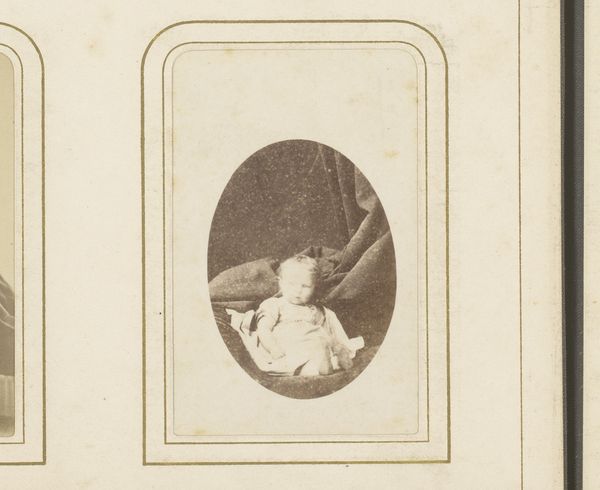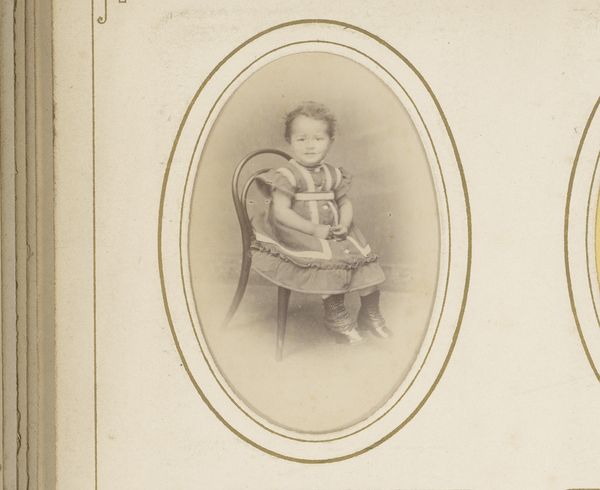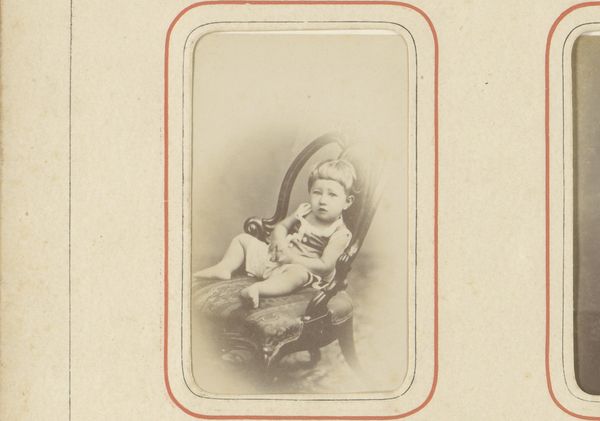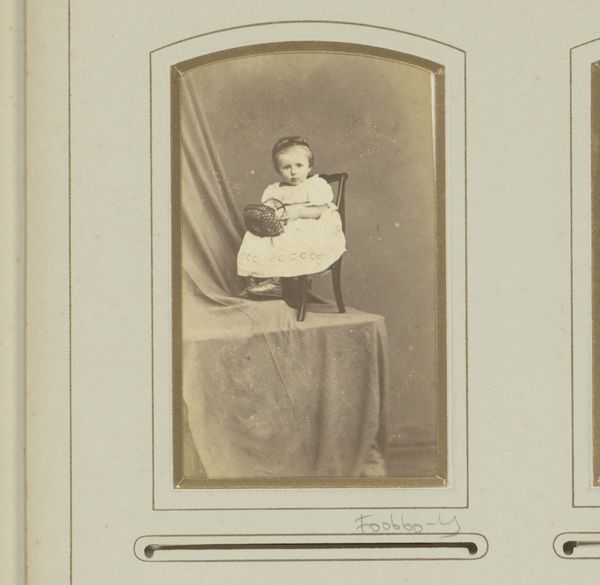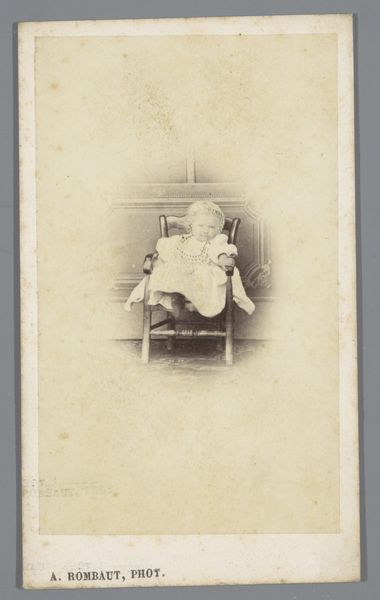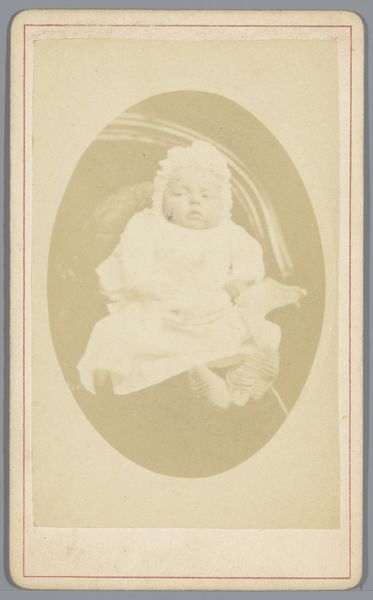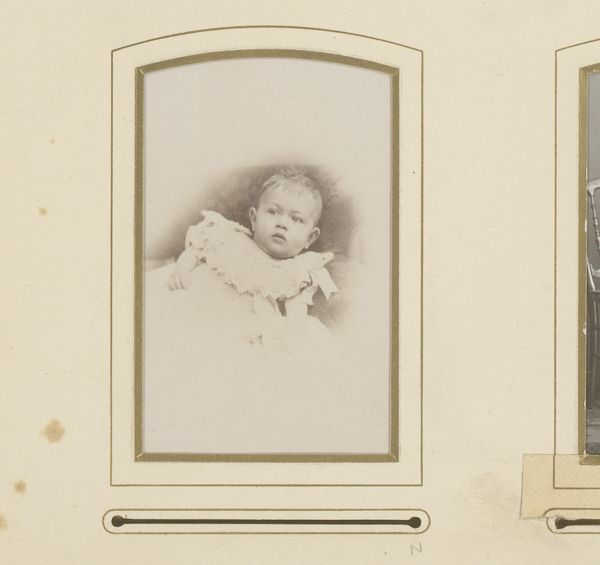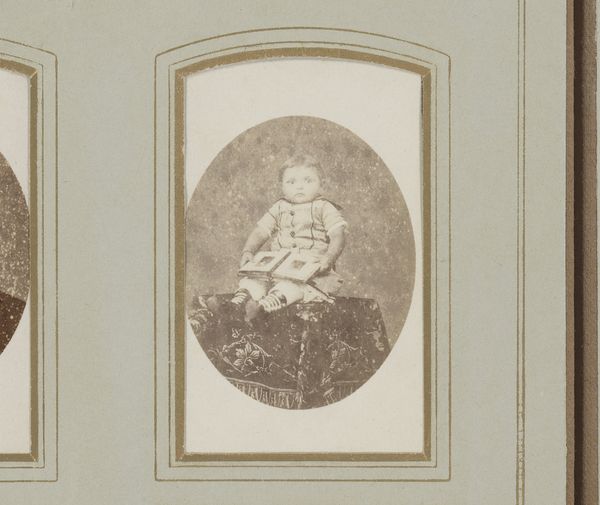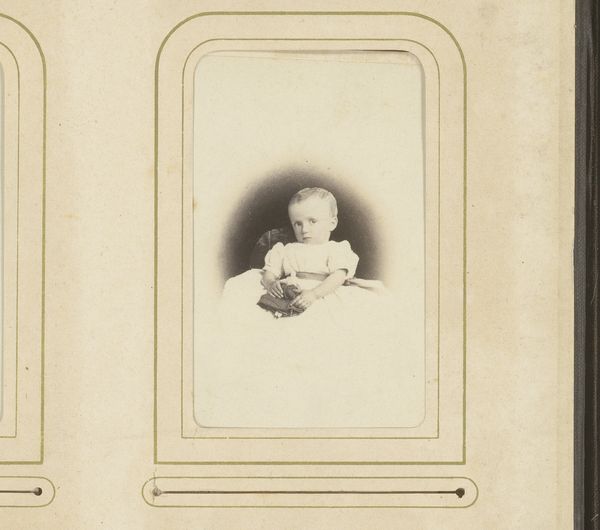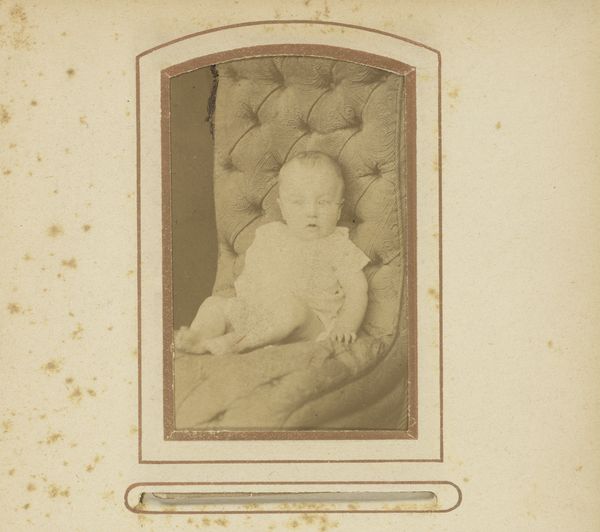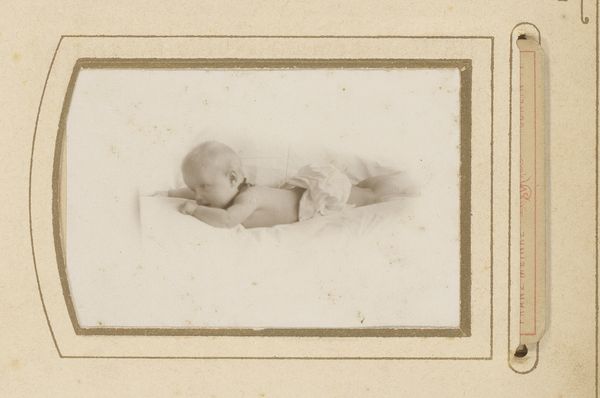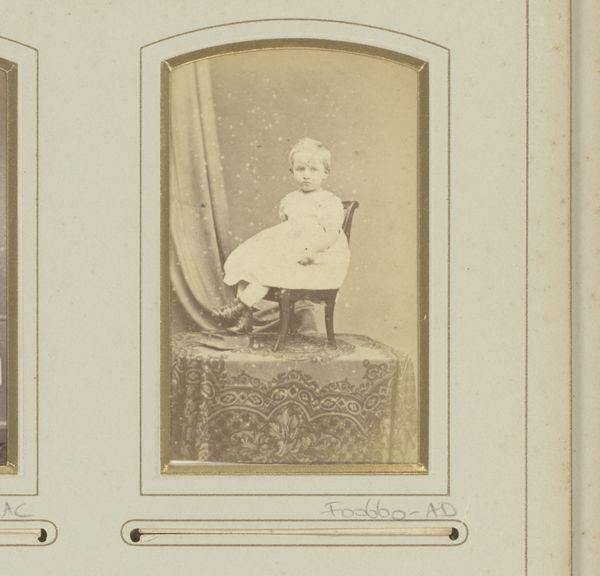
photography, gelatin-silver-print
#
portrait
#
photography
#
gelatin-silver-print
#
genre-painting
#
watercolor
Dimensions: height 85 mm, width 52 mm
Copyright: Rijks Museum: Open Domain
Curator: This gelatin-silver print, dating from between 1875 and 1899, is titled “Portret van een liggende baby,” and it’s attributed to Egide Linnig. What strikes you about it? Editor: It feels surprisingly modern, the direct gaze especially. And the tonality evokes a melancholy tenderness. It’s not the overtly sentimental image one might expect from that period. Curator: Exactly. The oval framing and delicate backdrop create an intimacy. In portraits like these, a prone infant often symbolizes innocence or purity. It taps into archetypal images of the Christ child. Editor: I’m drawn more to the political and economic context. Think about access to photography then. Commissioning a portrait like this spoke volumes about social standing and privilege. This wasn't accessible to everyone. Curator: That's insightful. The act of preserving this image – stopping time, as it were – imbues the baby with lasting importance, an aspiration of sorts for family lineage. Notice also the geometric lace pattern underneath the infant—repeated cultural symbols denoting domesticity, familial comfort and structure. Editor: It also makes me think about gender. This probably was presented or imagined as future wife, homemaker, mother—an identity mapped onto a very young, unsuspecting subject. Even in innocence, expectations are inscribed. Curator: A poignant reminder that even these seemingly simple depictions contain layers of cultural encoding. I can't help but see an echo of past hope, carried through the generations in visual form. Editor: And the fact that we are looking at it today highlights the continuous processes of power and the social conditions of looking—a testament of how portraits help weave historical continuity between class and culture, not just personal identities.
Comments
No comments
Be the first to comment and join the conversation on the ultimate creative platform.
